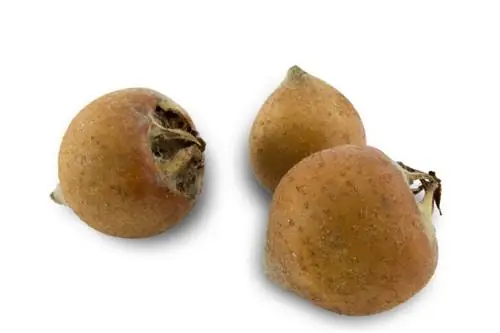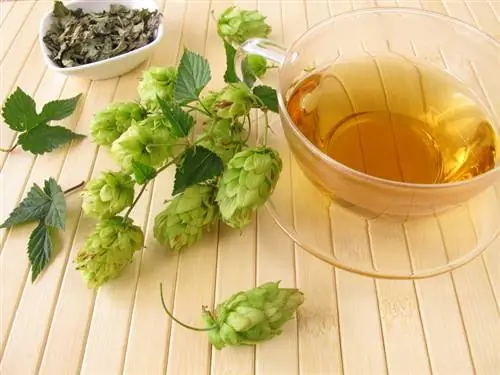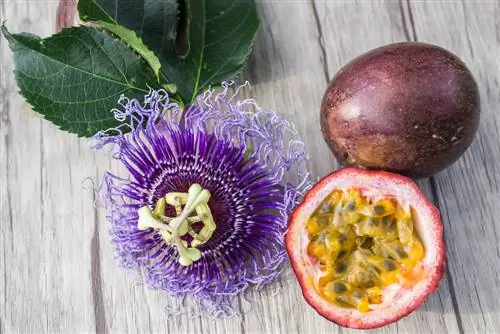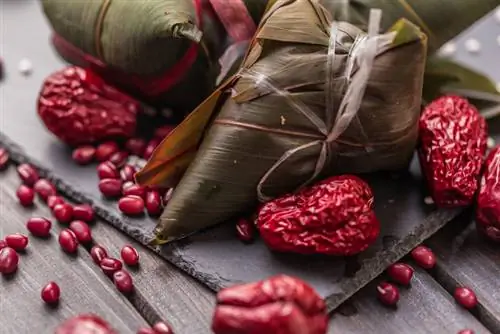- Author admin [email protected].
- Public 2023-12-16 16:46.
- Last modified 2025-01-23 11:20.
Very few people know them and would know what to do with them. They would walk right past the ripe specimens at harvest time in late fall. Everything you should know about the fruits of the medlar

What are medlars and how are they used?
Loquats are small, spherical fruits that are ready to harvest in late autumn after the first frosts. They have a brown-colored, felty shell and taste sweet and sour, tart and nutty. Medlars are rich in vitamins, minerals and trace elements and can be used raw or processed into jam, puree, puree, compote, juice and wine.
What does this fruit look like?
Medlars used to be much better known than they are today. They are exceptionally different than most fruits known in this country. They are also known as stone apples because they are extremely hard and inedible when exposed to frost.
They are vaguely reminiscent of quinces or pears, but are usually much smaller. While the original medlar grows between 2 and 4 cm tall, cultivated varieties grow up to 7 cm tall. They are spherical and flattened, brown in color when ripe and have a felty shell. A striking feature are the sepals of the flowers, which are still preserved on the fruits.
When are they ripe?
Medlars can be harvested after the first frosts in autumn. The ideal harvest time is between early November and early December. If they grow in areas without frost, they can ripen in fruit boxes on straw after harvesting, for example.
The frost or ripening causes the fruits to become soft and the tannins they contain to evaporate. Beforehand, they are not very tasty and are astringent due to the high amount of tannins, which is noticeable in the mouth as an unpleasant contracting feeling.
When ripe, the medlars are:
- doughy-soft
- musty
- sweet-sour, tart and nutty in taste
What can they be used for?
Ripe fruits can be used to propagate the plant. To do this, the seeds contained in the dough-like pulp are freed and cleaned. They can be planted in spring. However, this propagation method is considered extremely lengthy
The medlars are not poisonous and are therefore edible both raw and cooked. They can be eaten raw directly from the bush orTree can be picked and consumed. They are suitable for processing into jam, puree, puree, compote, juice and wine. They can be combined well with wide autumn fruits such as apples, rose hips and sloes.
In addition to their good taste, the medlars impress with their he alth value. They contain lots of vitamins, minerals and trace elements and are a valuable fruit in the fall season when colds are common. Taken internally, they promote digestion, have an anti-inflammatory effect and slow down calcification processes (helpful, for example, in arteriosclerosis)
Tips & Tricks
Medlars cannot be stored for long when soft. Store them in the refrigerator and consume them within five days.






